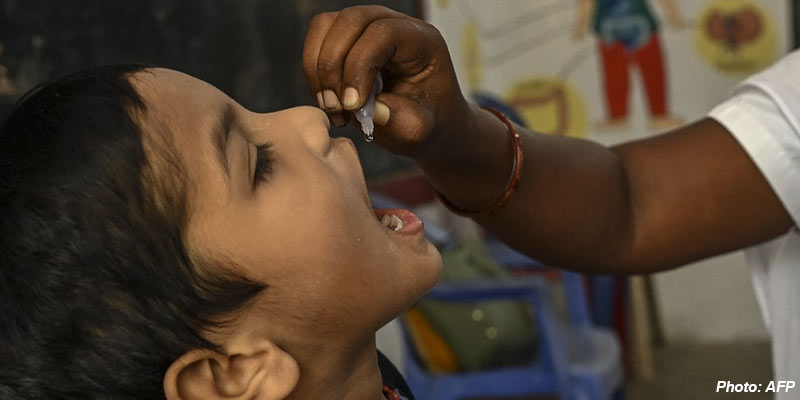- World
- Oct 25
Only 36 polio cases reported so far in 2025, says WHO
• Three decades ago, polio paralysed around 350,000 children per year.
• Following a UN-led international push, that number is now less than 50.
• World Polio Day, observed on October 24, raises awareness about the progress made and challenges that remain to end its spread.
• In 1988, the international community united under the World Health Organisation’s (WHO) leadership with the goal of eradicating polio.
• Launched in 1988 after the World Health Assembly passed a resolution to eradicate polio, the Global Polio Eradication Initiative (GPEI), along with its partners, has helped countries to make huge progress in protecting the global population from this debilitating disease.
• Since the launch of the initiative, the number of polio cases has dropped by more than 99 per cent, with only 36 cases of the virus reported so far in 2025.
• Certain regions of the world, however, are still struggling to eradicate polio, and the ones that have succeeded in doing so must continue to support public health authorities in disease monitoring and prevention.
• Failure to implement strategic approaches leads to ongoing transmission of the virus.
• Endemic transmission of wild poliovirus is continuing in areas of Afghanistan and Pakistan.
• In Afghanistan, a ban on house-to-house immunisation has resulted in over one million children missed in southern areas by polio vaccination campaigns since May 2018, according to the WHO’s Polio Eradication Strategy 2022-2026.
• As a result, in 2019 and 2020, respectively, 90 per cent and 75 per cent of Afghanistan’s type 1 polio cases originated in areas not currently accessible for vaccination.
Key points on polio:
• Poliomyelitis (polio) is a highly infectious viral disease that largely affects children under five years of age. The virus is transmitted by person-to-person spread mainly through the faecal-oral route or, less frequently, by a common vehicle (for example, contaminated water or food) and multiplies in the intestine.
• It can infect a person’s spinal cord, causing paralysis and possibly permanent disability and death.
• Of the three strains of wild poliovirus (type 1, type 2 and type 3), wild poliovirus type 2 was eradicated in 1999 and no case of wild poliovirus type 3 has been found since the last reported case in Nigeria in November 2012. Both strains have officially been certified as globally eradicated. At present, wild poliovirus type 1 affects two countries — Pakistan and Afghanistan.
• Economic modelling has found that the eradication of polio would save at least $40-50 billion, mostly in low-income countries.
• There are two vaccines available: oral polio vaccine and inactivated polio vaccine.
• Both are effective and safe, and both are used in different combinations worldwide, depending on local epidemiological and programmatic circumstances, to ensure the best possible protection to populations can be provided.
Eradication of polio in India
• India was certified polio-free by the Regional Polio Certification Commission in 2014.
• The last case of wild poliovirus in the country was reported in 2011 from Howrah, West Bengal and no wild poliovirus cases have been reported thereafter from any state/UT.

